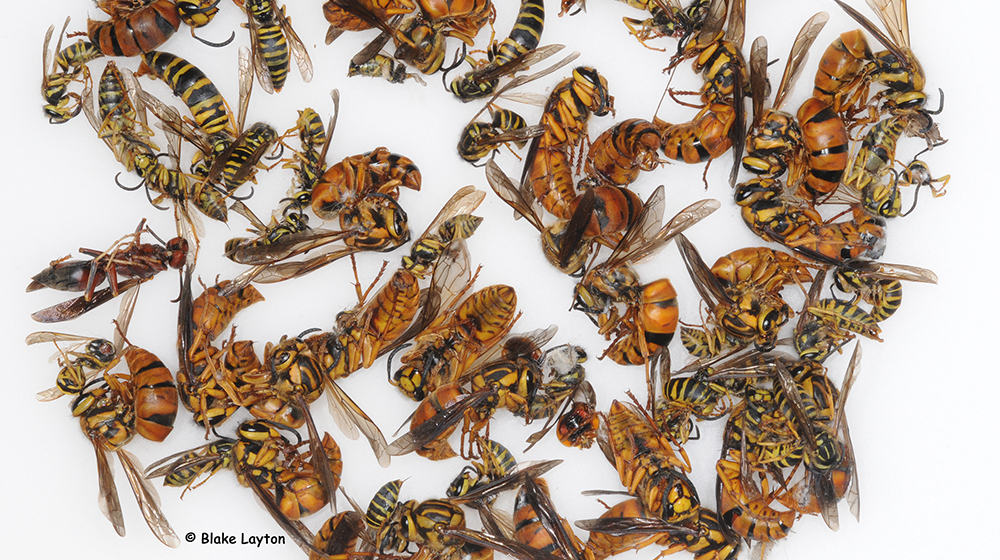Southern Yellowjackets Vol. 2, No. 32
Related News
October 1, 2013
September 10, 2013
June 24, 2013
June 20, 2013

“We killed this yellowjacket nest in the backyard, and then, after all the wasps were dead, we dug it up to see what was inside. There were three different sizes of wasps in there, including some big orange ones that don’t look like yellowjackets. What’s going on here?”
Although southern yellowjackets normally nest in the ground, they will sometimes build nests in above ground sites, such as between stacked bales of hay or in insulation in wall or ceiling voids. The nest is started by a single, mated female or queen that spent the winter under the bark of a dead tree or in some similar protected site. The nest grows throughout the spring and summer and may eventually contain over a thousand yellowjackets, mostly small workers. But in the fall, each nest produces reproductive males and females, and a large nest may contain dozens of each sex.
Here you see all three castes of southern yellowjackets. The small, yellow and black workers are only about 3/8 inches long, but the reproductive females are much larger, about ¾ inches long, and burnt orange in color. You can also see several males, which are the same color as the workers but are intermediate in size. Had they survived, these large orange females would have left the nest, mated, found a protected place to spend the winter, and attempted to found their own nest the following spring.
We also have eastern yellowjackets, Vespula maculifrons, here in the state. Their queens are yellow and black like the workers and are somewhat larger than the workers, but not as large as southern yellowjacket queens. This size difference is important because a high percentage of southern yellowjacket queens begin their nests in the spring by taking over the nest of an eastern yellowjacket queen.
Control: When a yellowjacket nest is discovered at this time of year, simply doing nothing, other than avoiding the area, may be the best approach. Most nests die out with the onset of freezing weather, although in the southern portion of the state, a small percentage of southern yellowjacket nests sometimes survive the winter to become “perennial nests,” and these perennial nests can become quite large. When it is necessary to eliminate a yellowjacket nest, aerosol wasp and hornet sprays injected into the entrance hole are usually quick and effective, but it is important to take appropriate precautions to avoid being stung. Wearing a beekeepers veil with protective clothing and working at night, when these insects are less active, are two of the most effective precautions.
Blake Layton, Extension Entomology Specialist, Mississippi State University Extension Service. The information given here is for educational purposes only. Always read and follow current label directions. Specific commercial products are mentioned as examples only and reference to specific products or trade names is made with the understanding that no discrimination is intended to other products that may also be suitable and appropriately labeled.
Sign up to receive Bug's Eye View.